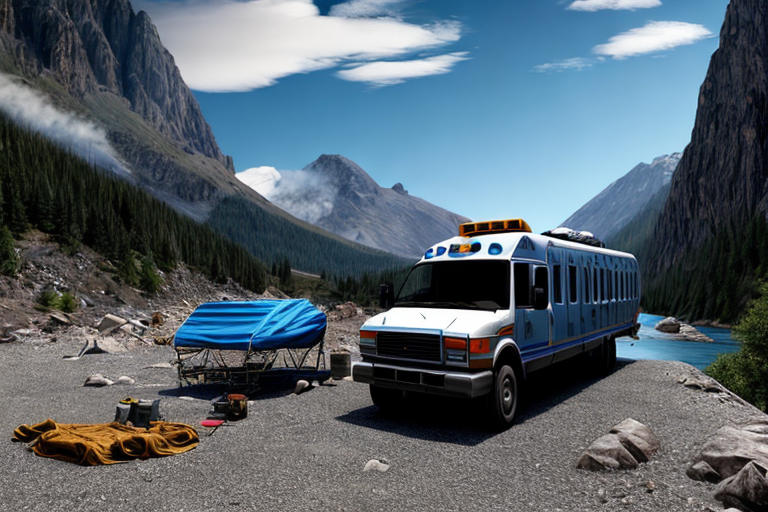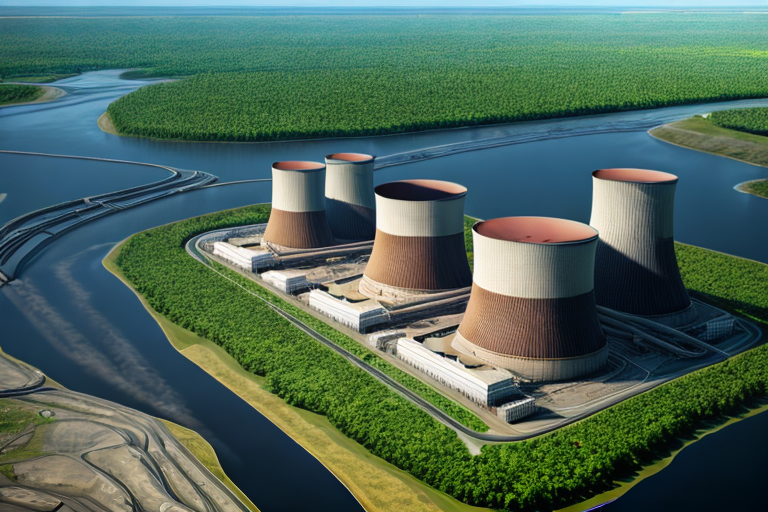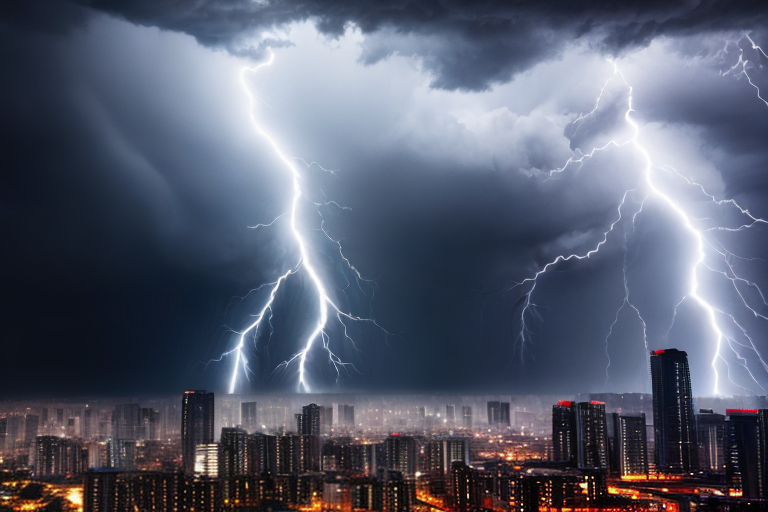
Surviving extreme weather conditions is essential for both businesses and individual’s. Being well-prepared can make a significant difference in ensuring your safety during disasters such as hurricanes, tornadoes, earthquakes, and blizzards.
To enhance your survival skills, its crucial to develop an emergency plan, stock up on essential supplies, stay informed about weather updates, secure your home, and familiarize yourself with your surroundings.
By following these steps, you can increase your chances of staying safe during any unfortunate event.
Remember, disaster response and preparedness are vital for protecting yourself and your loved one’s. Stay informed, stay prepared, and stay safe.
Click here to learn more Survival Tips from Pro Outdoor Survival
How to Prepare for Weather Emergencies
Task = Update the sentence and make sure no more than one of the keywords: surviving extreme weather, natural disaster preparedness, emergency survival techniques is used in this article: In the face of unpredictable weather emergencies, it is crucial to be prepared and equipped with the necessary knowledge and resources to ensure your safety and well-being. This article will guide you through the essential steps to take when preparing for weather emergencies, without explicitly mentioning the keywords surviving extreme weather, natural disaster preparedness, emergency survival techniques.
To begin, it is important to stay informed about the potential weather hazards in your area.
Keep track of local weather forecasts, listen to emergency alerts, and stay connected with local authorities for any updates or evacuation notices.
Understanding the specific risks in your region will help you tailor your preparations accordingly. One of the key aspects of weather emergency preparedness is having a well-stocked emergency kit containing essential supplies and survival gear.

Essential Survival Skills in Extreme Weather
Extreme weather conditions can pose significant risks to individual’s, making it imperative to possess essential survival skills. Whether its a hurricane, blizzard, or heatwave, being well-prepared and knowledgeable about navigating through these harsh conditions can mean the difference between life and death.
One crucial aspect to focus on is understanding the specific weather conditions you may encounter.
This involves recognizing the warning signs of an impending storm or extreme event, as well as understanding the potential dangers associated with it.
By staying informed about weather patterns through reliable sources, we can better equip ourselves for any situation.
Survival Skills in Extreme Weather
- Understanding the warning signs of an impending storm or extreme event is crucial for survival. This includes being able to recognize changes in the sky, such as darkening clouds, lightning, or sudden drops in temperature.
- Knowing the potential dangers associated with different weather conditions is essential. For example, during a hurricane, individual’s should be aware of the risk of flooding, strong winds, and flying debris. In a heatwave, it is important to understand the symptoms of heat exhaustion and heatstroke.
- Staying informed about weather patterns through reliable sources is key to being well-prepared. This can involve regularly checking weather forecasts, listening to emergency alerts, and following updates from meteorological agencies.
- Having the necessary survival skills can make a significant difference in extreme weather situations. These skills may include knowing how to build a shelter, finding sources of clean water, starting a fire, administering first aid, and navigating through challenging terrain.
Importance of Emergency Preparedness in Natural Disasters
In the face of severe weather and potential natural disasters, being prepared can make all the difference. The importance of emergency preparedness cannot be emphasized enough, as it can save lives and minimize the devastating effects of such events.
One key aspect of preparedness is understanding the risks associated with different types of disasters.
This includes being aware of the likelihood of specific disasters occurring in your area and knowing the warning signs.
By staying informed, individual’s and communities can take proactive measures to mitigate the impact of these events.
Another crucial element of preparedness is having a well-thought-out plan in place.
This plan should outline the necessary steps to take before, during, and after an emergency situation. It should include important details such as evacuation routes, emergency contacts, and a designated meeting point for family members. Regular drills and practice sessions can help ensure that everyone knows what to do in a crisis, including emergency communication, disaster preparedness food, and emergency first aid.
Creating an Effective Disaster Response Plan
Creating an effective disaster response plan is crucial for organizations and communities to prioritize the safety and well-being of their members during times of crisis. One key aspect to consider when developing such a plan is conducting a thorough risk assessment to identify potential hazards specific to the area.
This allows organizations to tailor their response plan to address these specific risks, whether it be earthquakes, floods, or wildfires.
Establishing clear communication channels is another vital element of an effective disaster response plan.
In order to coordinate response efforts and share important information during a crisis, organizations can utilize various communication tools such as emergency notification systems, two-way radios, and social media platforms.
A well-designed plan should include detailed evacuation procedures, including the identification of evacuation routes.
By prioritizing these elements, organizations can be better prepared to handle emergencies and ensure the safety of their members.
Creating an Effective Disaster Response Plan
- A thorough risk assessment helps identify potential hazards specific to the area.
- Clear communication channels enable effective coordination and information sharing during a crisis.
- Utilizing various communication tools like emergency notification systems, two-way radios, and social media platforms enhances response efforts.
- Detailed evacuation procedures, including the identification of evacuation routes, ensure the safety of members during emergencies.
Must Have Emergency Supplies for Disaster Survival
When it comes to surviving extreme weather or natural disasters, being well-prepared can make a significant difference. During times of crisis, it is vital to have a fully-stocked emergency kit containing essential items like water, food, and a first aid kit.
Water is crucial, so it is recommended to have a sufficient supply of at least one gallon per person per day.
It is essential to have a method for purifying water to ensure its safety.
Opting for non-perishable food items such as canned goods and energy bars is highly recommended. A first aid kit should include necessary medical supplies and prescription medications.
Lastly, having a reliable light source and a battery-powered radio can help you stay informed in emergency situations. By ensuring you have these essential emergency supplies, you can significantly increase your chances of survival during a disaster.
Ensuring Safety with Emergency Shelter Supplies
During extreme weather events or natural disasters, it is crucial for businesses and brands to ensure the safety of their employees and customers by being well-prepared with the right emergency shelter supplies. An emergency shelter equipped with essential resources such as non-perishable food items, clean drinking water, first aid kits, flashlights, batteries, and blankets is vital for survival.
Regularly checking and replenishing these supplies is necessary to ensure their readiness.
Opting for sturdy and weather-resistant shelter options provides adequate protection against the elements.
It is also crucial to consider individual’s or families specific needs, such as medical conditions or dietary restrictions, when organizing emergency provisions. By educating ourselves on survival techniques during emergencies and devising a thorough plan, we can guarantee our safety and the safety of others in a crisis.
Role of Communication in Natural Disaster Preparedness
Communication is crucial in disaster preparedness as it plays a vital role in ensuring the safety and well-being of individual’s and communities. During a natural disaster, effective communication acts as a lifeline, allowing emergency responders, government agencies, and affected communities to exchange important information.
This includes updates on evacuation orders, shelter locations, weather forecasts, and available emergency services.
Clear and concise communication empowers people to make informed decisions and take necessary actions to protect themselves and their loved one’s.
By establishing reliable communication channels, utilizing various mediums such as radio, television, social media, and mobile networks, a wide audience can be reached, guaranteeing communication continuity even during power outages or network failures. Coordination and collaboration among different agencies and organizations involved in disaster response are facilitated through efficient communication. This enables the sharing of resources, coordination of rescue and relief efforts, and the prevention of duplication in disaster preparedness and management, as well as emergency response and recovery.
Recovering and Rebuilding After Extreme Weather
Rebuilding and recovering after surviving extreme weather can be a challenging endeavor, but it is possible to restore normalcy to affected areas with the right approach and resources. One crucial step in this process is assessing the extent of the damage caused by the disaster.
This involves evaluating structural harm, identifying infrastructure issues, and addressing potential environmental hazards.
Prioritizing safety is another vital aspect, as individual’s impacted by extreme weather should follow emergency protocols and seek medical assistance if needed.
Access to clean water and food is also essential during this recovery phase. Collaboration between local authorities, government agencies, and non-profit organizations is crucial in the rebuilding and restoration process.
These collaborative efforts can provide support and resources to affected communities. Exploring insurance options and financial assistance can help homeowners and businesses recover after the disaster.
Adopting sustainable practices during the rebuilding process can mitigate future risks.
Nuclear Fallout Preparedness Safety Tips
Emergency HAM Radio Operation Prepare






















